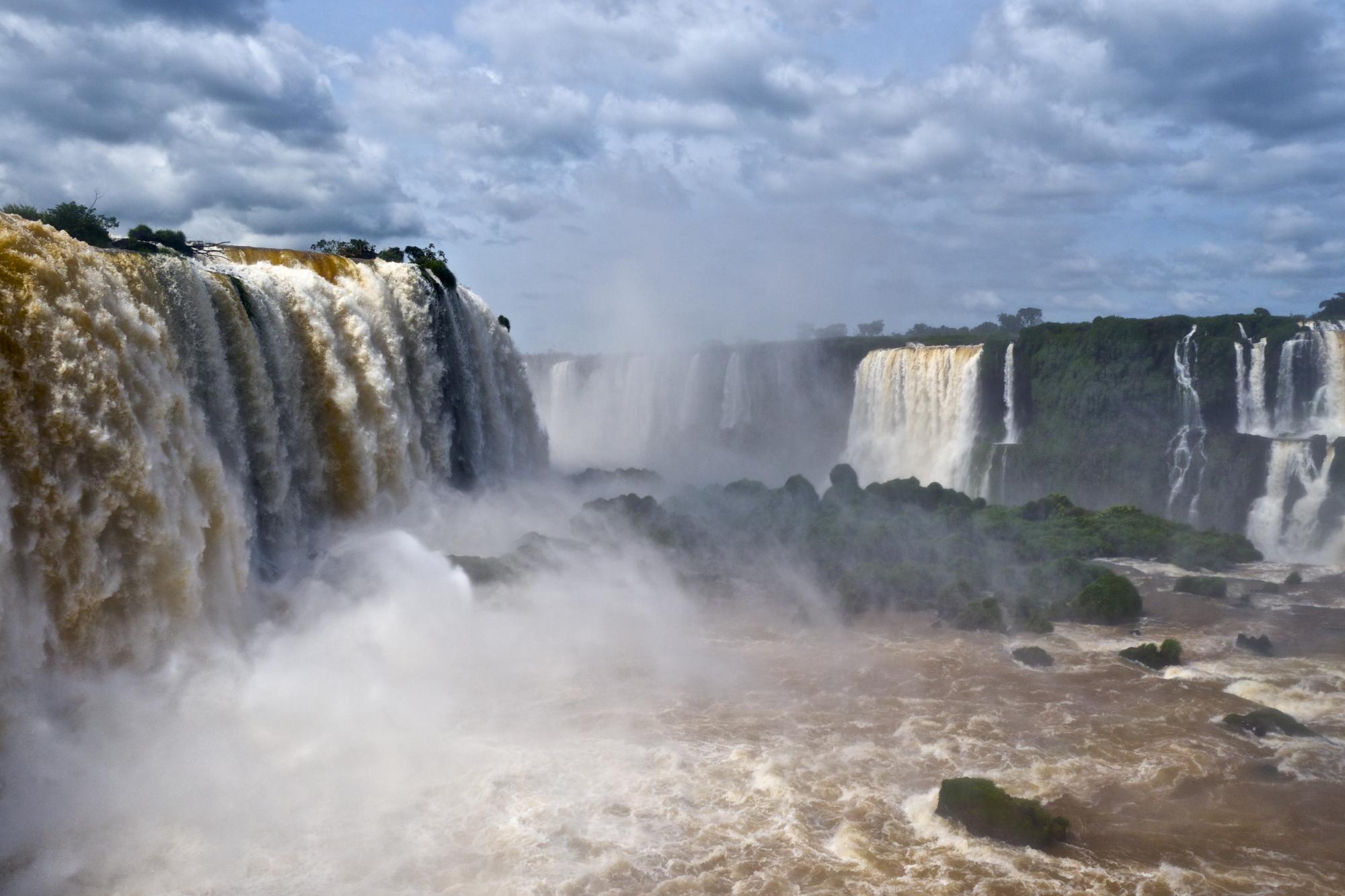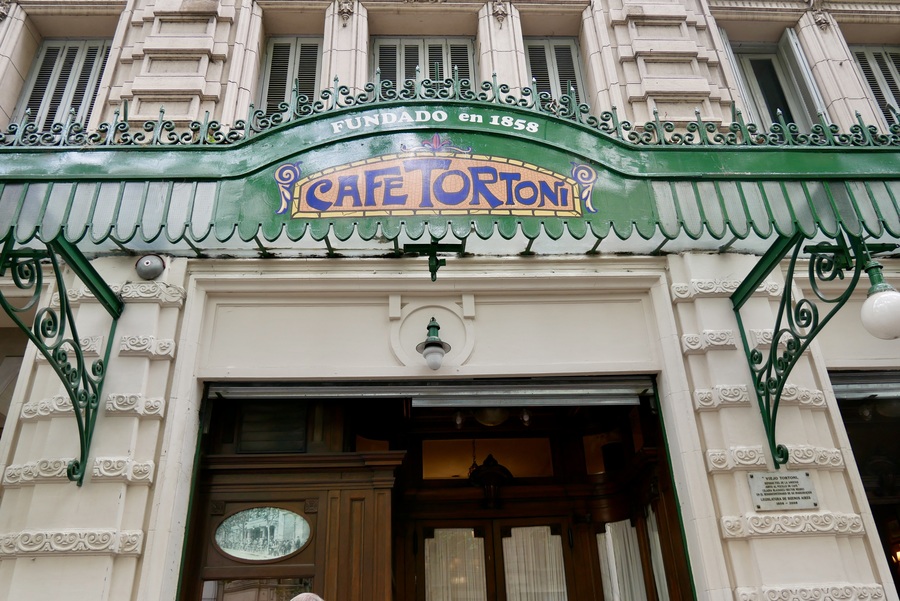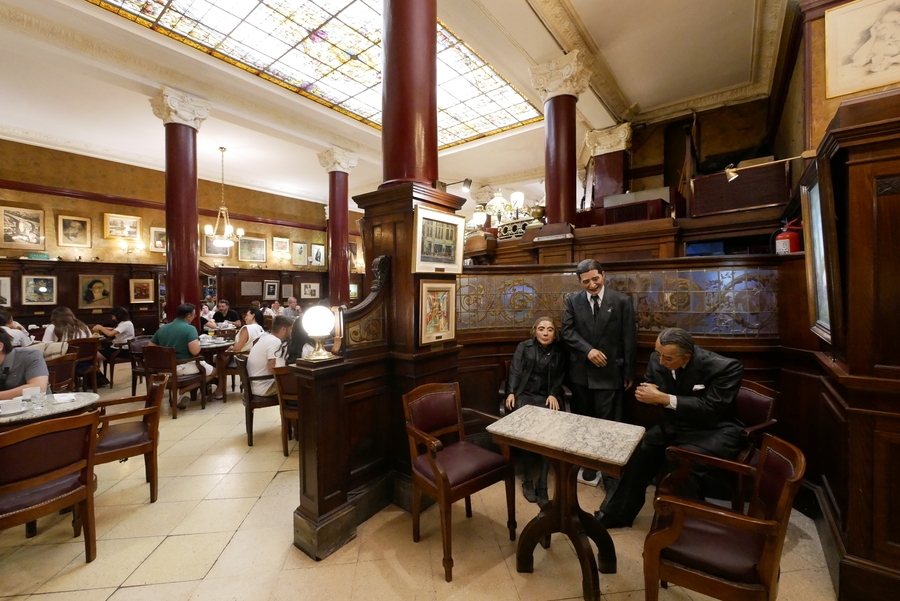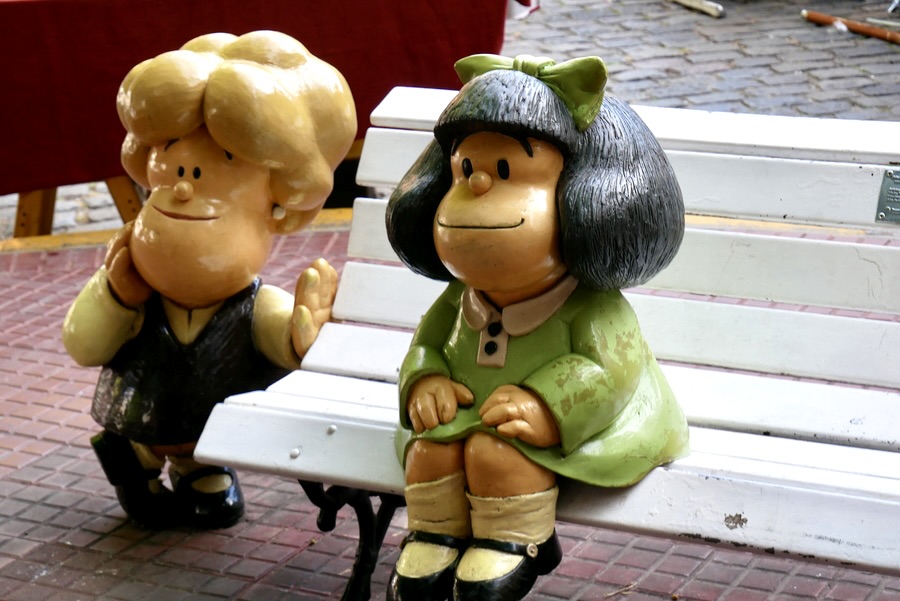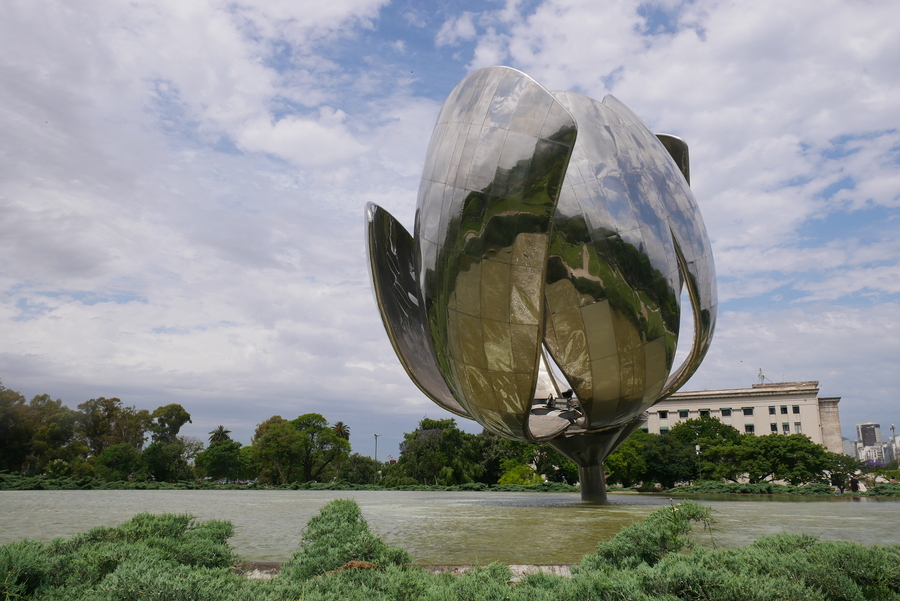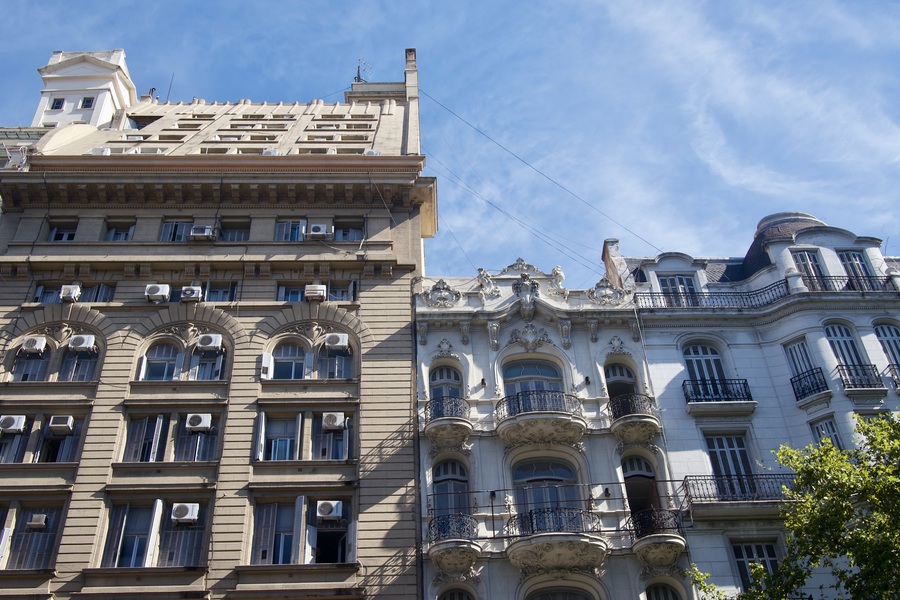
A First Timer’s Guide to Buenos Aires Argentina
With its wide, tree-lined avenues, Art Nouveau architecture, cobblestone streets, and sidewalk cafés, Buenos Aires exudes a sultry charm that blends European elegance with Latin American flair.
Known affectionately around the world as BA, Buenos Aires is a tourist favorite. It entices visitors with its eclectic neighborhoods, vibrant atmosphere and party-till-you drop nightlife.
Buenos Aires: The Paris of South America
The Argentine capital possesses the sophistication and charm of Paris, while maintaining a rough and sometimes gritty exterior common in many South American cities. Buenos Aires quickly reveals itself as a city of contrasts—both brash and elegant, rough and refined.
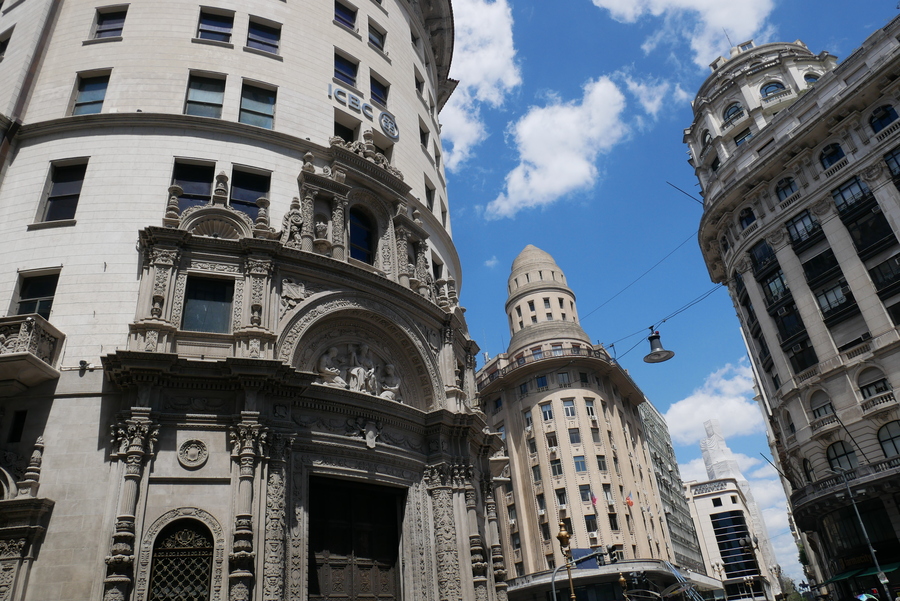
Like Sao Paulo, I initially found Buenos Aires to be somewhat harsh on the exterior. On my first visit, I struggled to look past the city’s dirty streets and rundown buildings. However, on my second visit, I realized that I had simply spent too much time in the wrong places.
My first trip to the city was a 24-hour whirlwind of speed-walking from one attraction to another in suffocating heat. Poor planning led me to spend a substantial part of my day on foot between La Boca, Plaza de Mayo, and Recoleta Cemetery. As a result, I didn’t truly experience much beyond those three popular attractions and the spaces in between.
It was only on my second visit—en route to Tierra del Fuego, Antarctica and South Georgia—that I understood why Buenos Aires often tops travelers’ lists of favorite cities. Buenos Aires is not only Argentina’s capital, but it is also the axis around which everything in the country revolves. There is simply no better place to learn about about Argentina’s culture and history.
Things to Do in Buenos Aires
Buenos Aires is a massive city with tons of attractions. It is home to architectural landmarks, cultural traditions, culinary gems, and natural retreats.
There are enough things to do in Buenos Aires to keep you entertained for weeks.
However, I know that not everyone has unlimited time, so this guide highlights the city’s top attractions and experiences. You can fit them all into a three- or four-day itinerary.
Sightsee in Downtown Buenos Aires
Central Buenos Aires encompasses the neighborhoods of Montserrat, Retiro and San Nicolás. While not an official district of the city, the neighborhoods loosely form the city’s downtown core.
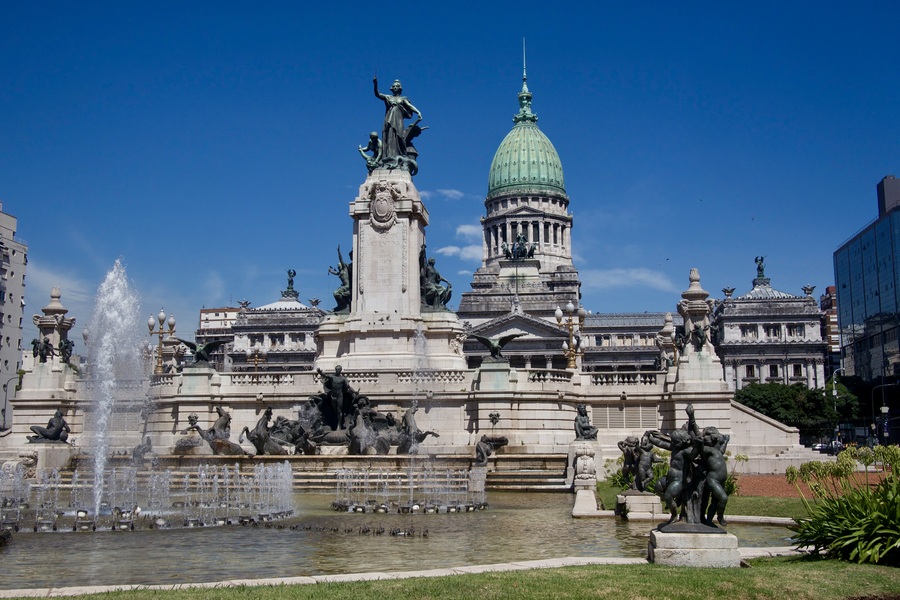
The downtown area is home to many of the top things to do in Buenos Aires. If you only have a day to explore the city, it is likely where you’ll spend the majority of your time.
-
Plaza de Mayo and the Pink House
There’s no better place to start your tour of Buenos Aires than the city’s central square. Plaza de Mayo has been a gathering point for many momentous events, from political protests to World Cup victory celebrations. It is a hub for demonstrations and resistance movements and home to the weekly gathering in commemoration of Argentina’s ‘disappeared’—citizens abducted by the state during the dictatorship of Jorge Rafael Videla from 1976 to 1983.
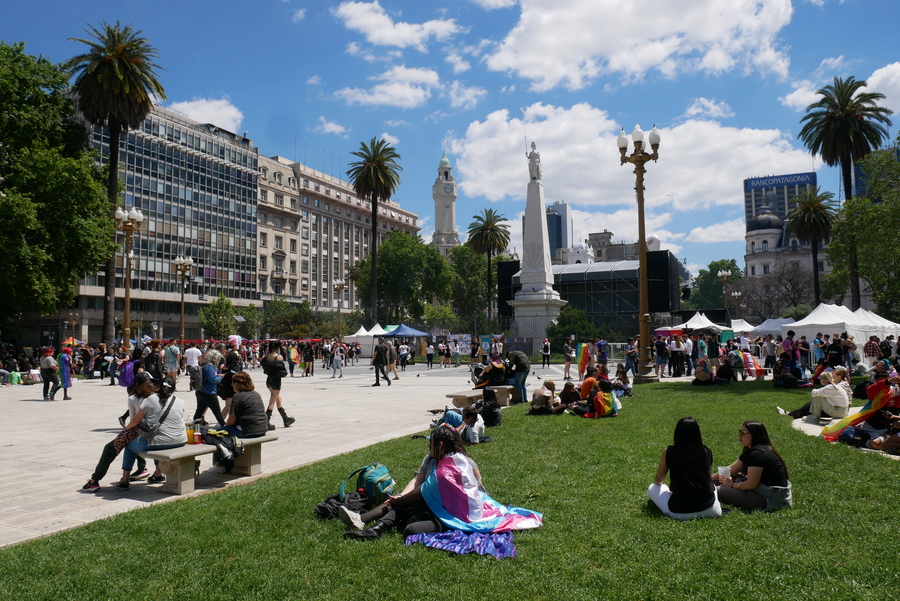
The plaza is overlooked by the Casa Rosada, a distinctive pink palace that houses the office of Argentina’s president. At its center stands the Pirámide de Mayo, a white obelisk built to mark the first anniversary of Argentina’s independence from Spain.
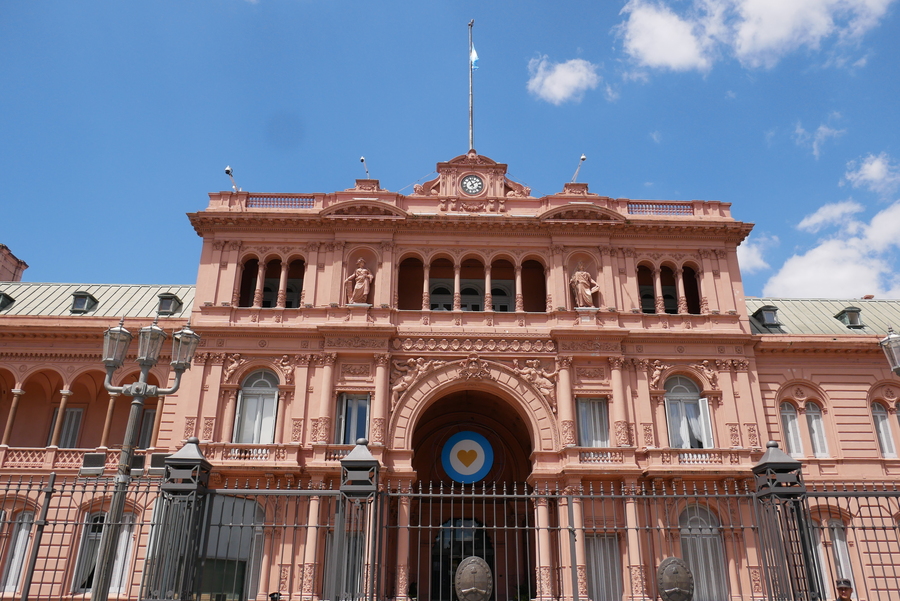
We happened to visit Plaza de Mayo during a PRIDE celebration. Throngs of people flooded the streets. The vibe was absolutely electric.
The plaza is overlooked by the Casa Rosada, a distinctive pink palace that houses the office of Argentina’s president. At its center stands the Pirámide de Mayo, a white obelisk built to mark the first anniversary of Argentina’s independence from Spain.
We happened to visit Plaza de Mayo during a PRIDE celebration, and the atmosphere was absolutely electric, with throngs of people flooding the streets
-
The Obelisk
One of the most iconic monuments in Buenos Aires, the Obelisco, soars above Plaza de la República on the Avenida 9 de Julio.
Erected in 1936 to mark the 400th anniversary of the city’s founding, the obelisk is ground zero for celebrations after major soccer victories. Passionate fans flock to the monument to sing, cheer, and honk their horns.
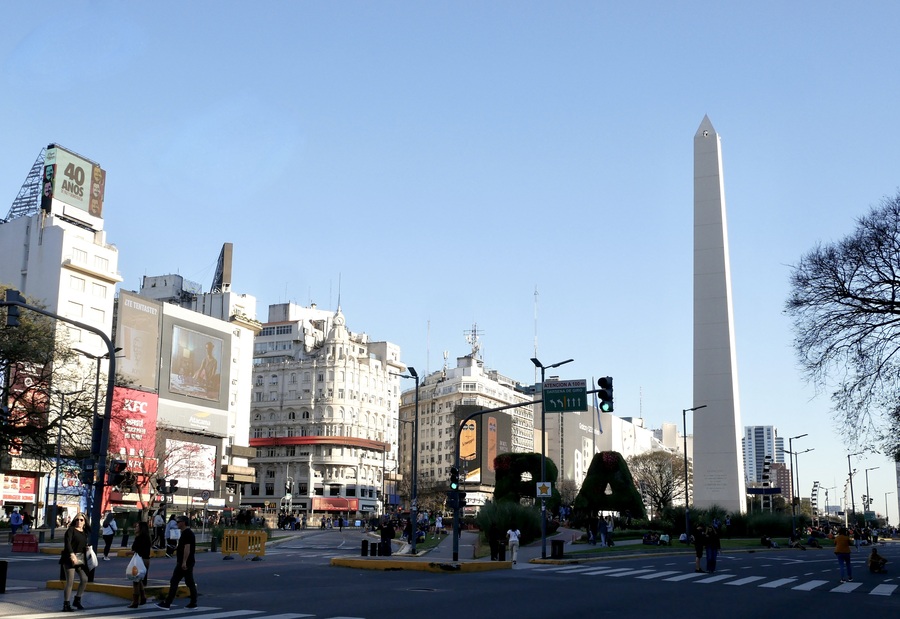
During our visit, crowds gathered at the Obelisco to support Boca Juniors as they faced Fluminense in the Copa Libertadores.
-
The Teatro Colón
Dating back to 1908, Teatro Colón is South America’s most revered performance venue. Often compared to La Scala in Milan or the Bolshoi Theatre in Moscow, it is considered one of the greatest opera houses in the world.
The impressive seven-story theater is a prominent Buenos Aires landmark. The Colón can house 3,000 spectators..
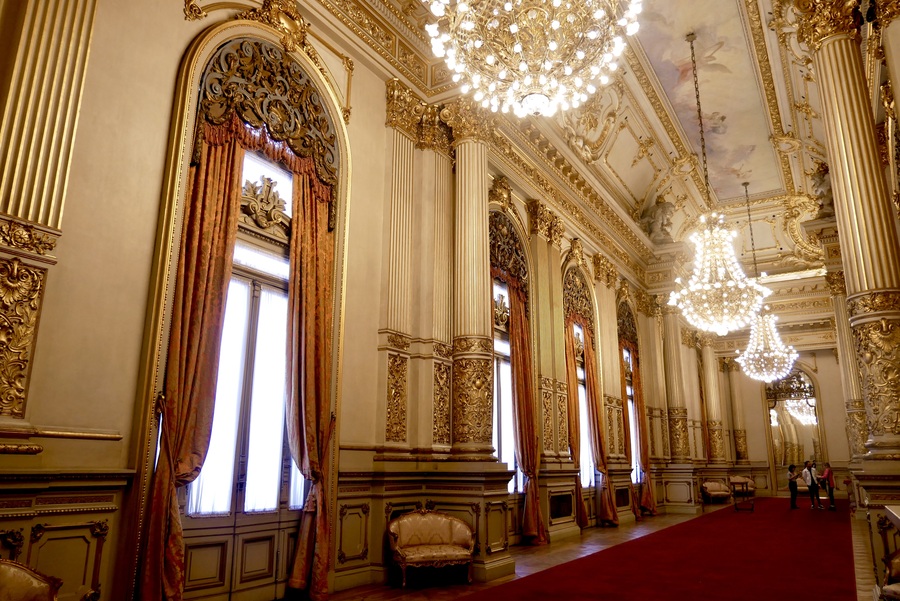
While seeing a performance in person is the best way to experience the Colón Theater, you can also join a 50-minute backstage tour of the venue.
The tour allows visitors to view the stunning interior of the Opera House, the costume department, and the dressing rooms.
-
Cafe Tortoni
Often cited as one of the world’s most beautiful coffee houses, Café Tortoni dates back to 1858.
It isn’t really the food that draws daily lines of people to the cafe. In fact, the food is pretty average and overpriced by Buenos Aires standards.
But when it comes to Cafe Tortoni, you’re really paying for the atmosphere and the history of the place.
Over its 175+ year history, literary figures, politicians, and intellectuals have spent time at Café Tortoni. Argentine writer Jorge Luis Borges was a regular at the coffeehouse, as was tango singer Carlos Gardel. Famous international visitors have included Hillary Clinton and Albert Einstein.
Visit the San Telmo Neighborhood
San Telmo is Buenos Aires’ oldest neighborhood. Historically home to dockworkers and brick-makers, it is now known for its Parisian-style architecture, bohemian atmosphere, antique shops, and tango culture.
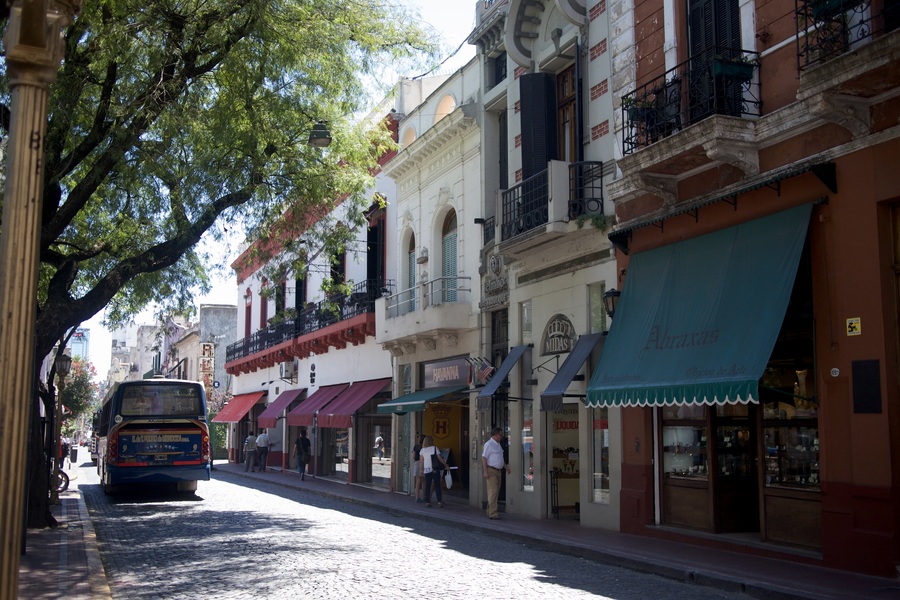
Open-air galleries and street vendors fill the cobblestone streets, making the neighborhood feel both lively and steeped in history.
-
The Mercado San Telmo
One of San Telmo’s focal points, the indoor San Telmo Market, occupies an entire city block and dates back to 1897. Inside, you’ll find a mix of fruit vendors and international eateries.
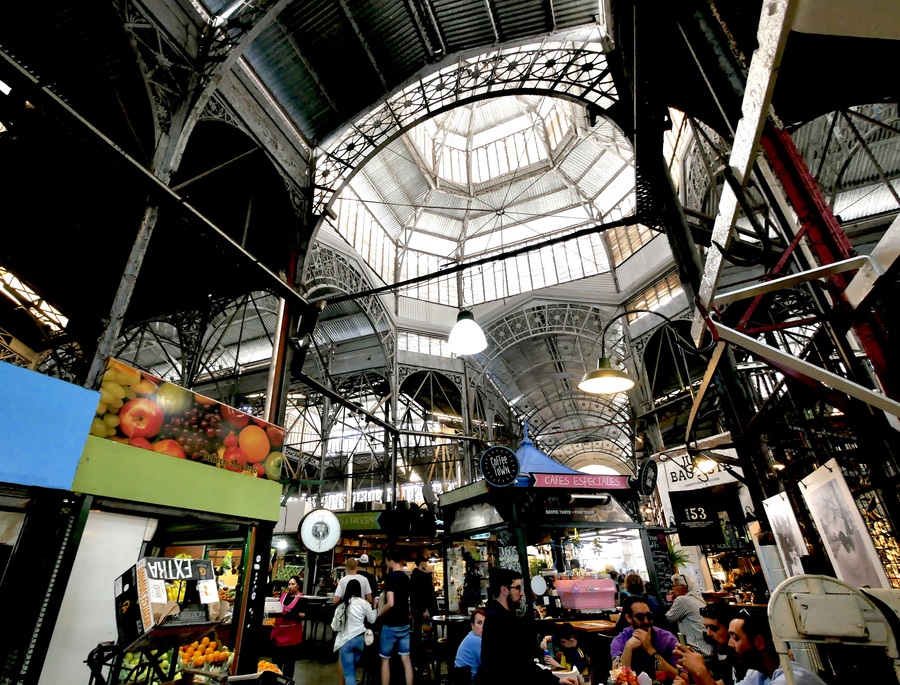
We ate at the San Telmo Market twice and found the food offerings to be varied and diverse. We ate at a Swiss restaurant and an Italian place. Prices seemed comparable to those on the street.
-
The Sunday Market
The Feria de San Telmo (San Telmo Street Fair) began as a 270-stall antiques market in 1970. Since then, it has grown into a huge street bazaar with vendors that sell everything from handmade goods to antique china. Hundreds of stalls set up shop every Sunday along Calle Defensa and Plaza Dorrego. Each week, an estimated 10,000 people browse the fair for bargains.
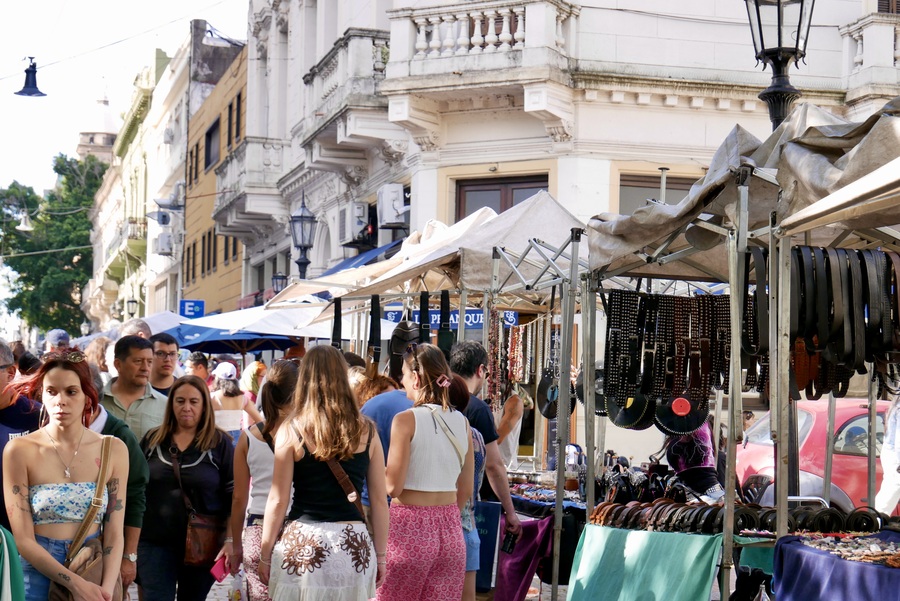
If you happen to visit Buenos Aires on a weekend, the San Telmo Market is a must-see.
-
Mafalda Statues
Mafalda is the heroine in an Argentine comic strip that was written and drawn by cartoonist Quino. The strip features a six-year-old girl named Mafalda, who had a deep concern for humanity. It was first published in 1964 and was wildly popular in Argentina and beyond.
A statue of Mafalda sits on a bench in San Telmo with her two friends. You’ll find other comic book characters scattered around the San Telmo neighborhood.
Visit the Neighborhood of La Boca
Just South of San Telmo, lies La Boca—the most colorful neighborhood in Buenos Aires. Home to the world renowned Boca Juniors and practically synonymous with tango, this relatively poor area of the city has been rejuvenated into one of Buenos Aires’ premier attractions.
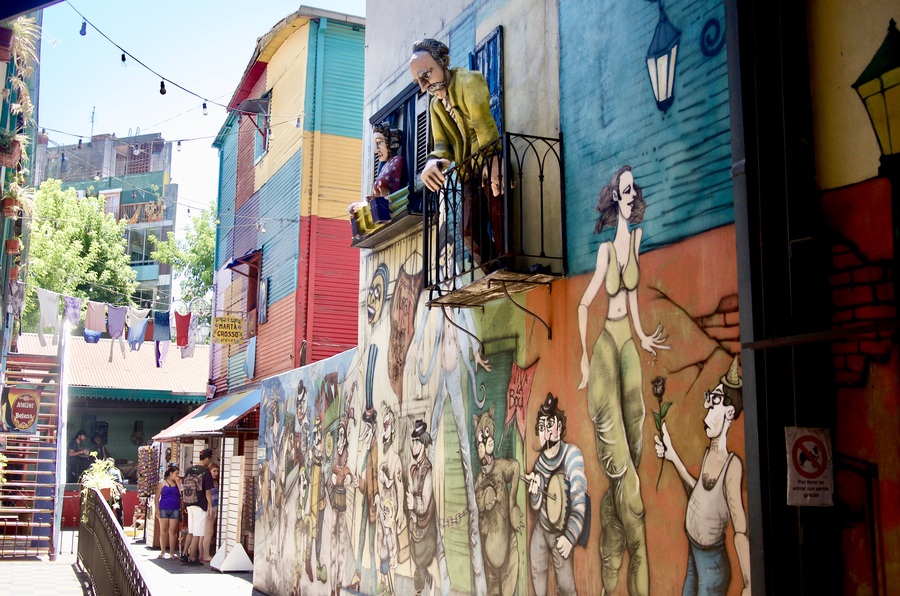
La Boca has a rich cultural history. Like London’s East End and New York City’s Lower East Side, La Boca was the neighborhood in which many of the city’s immigrants (primarily Italians from Genoa), first established roots in Buenos Aires. These immigrants constructed tenements made from scrap metal and used leftover paint from the shipyard to liven up their ramshackle homes.
By the end of the 1800s, La Boca was to Buenos Aires what Montmartre was to Paris–a vibrant enclave of immigrant artists, that maintained its own identity within a large and sophisticated city.
-
El Caminito
El Caminito is an ‘open-air’ museum of brightly painted houses. On the surface, El Caminito might seem like a gimmicky, Disney-style tourist trap full of kitschy souvenir shops and street performers, but peeling its colorful façade reveals an area that is both authentic and alive.
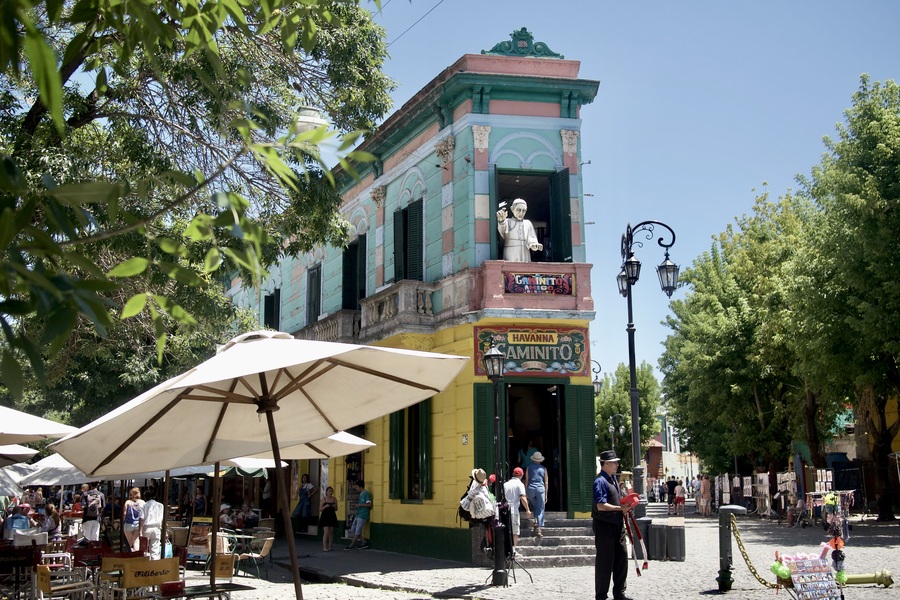
Today, the ramshackle colorful buildings of El Caminito are the city’s most distinct. Peering down at the street from the balconies, you’ll see figures of Juan and Eva Perón, Che Guevara and soccer legend Diego Maradona.
-
La Bombonera Stadium
For football fans, no trip to BA is complete without visiting Estadio Alberto J. Armando, lovingly known as “La Bombonera.”
Home to the city’s beloved Boca Juniors, the stadium is known for its incredible acoustics and passionate atmosphere. The stadium’s stands are very close to the pitch, which makes for an unbeatable atmosphere.
The Passion for Boca Juniors Museum, located inside the stadium, showcases memorabilia of the club’s 100 year history. You can also join guided 40 minute tour of the facility’s stands and locker rooms.
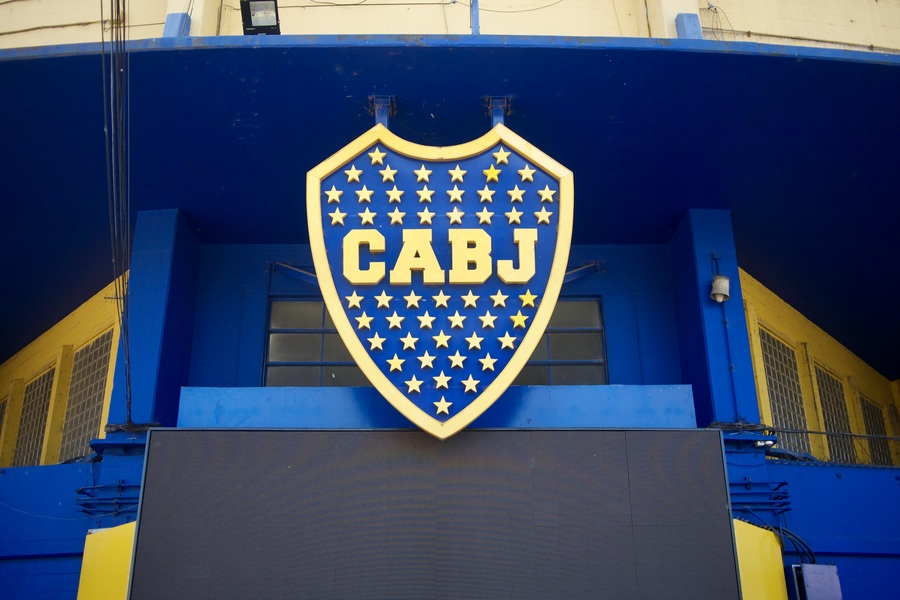
We didn’t have the chance to attend a soccer game while in Buenos Aires.
But the next time we visit the city, catching a game at the Bombonera will be at the top of our to-do list.
Explore the Recoleta Neighborhood
Recoleta is an upscale neighborhood in Buenos Aires that is famous for its European-style buildings and outdoor cafes. An elaborate 14 acre cemetery—final resting place of former first lady Eva Perón—is its. primary draw.
With tree-shaded streets, sprawling green spaces, and dozens of trendy cafes, the Recoleta neighborhood makes a popular base for exploring the city.
-
The Recoleta Cemetery
Strolling through the Recoleta cemetery is like walking through a neighborhood of the dead. Passageways lead through a collection of over 6,000 ornate marble mausoleums that tower above the narrow streets like intricately carved buildings.
Regarded as one of the most impressive cemeteries in the world, the Recoleta Cemetery contains the graves of military generals, Nobel Prize Laureates, writers and presidents. It famously houses the mausoleum of Eva Perón, Argentia’s beloved and controversial first lady.
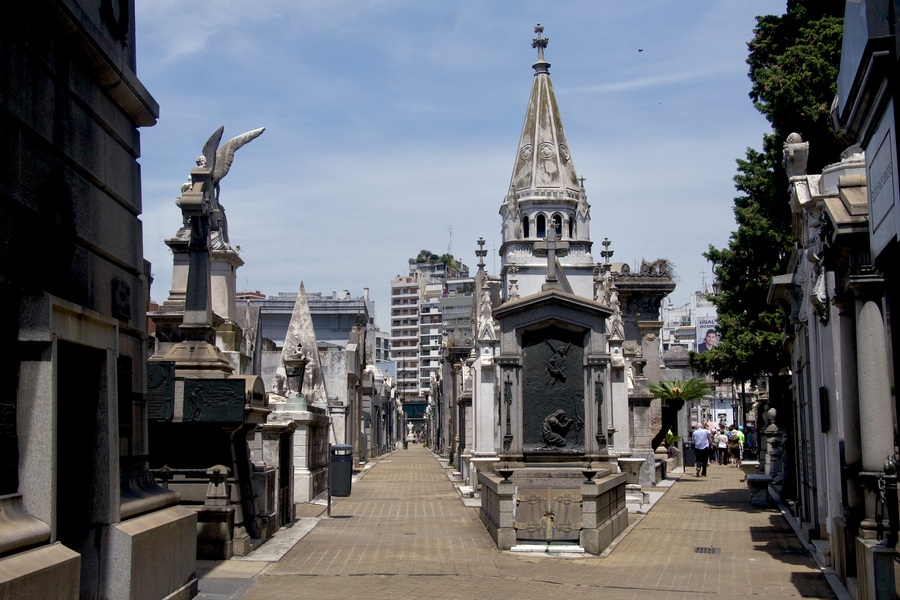
Eva Perón was the second wife of the mid-20th century Argentine president, Juan Perón. In the wake of a coup that deposed of her husband, Eva Perón’s embalmed body disappeared. Various accounts suggest that her body was passed around from hiding place to hiding place before being smuggled out of Argentina and buried in Milan.
It took over twenty years for Peron’s body to make its way back to Argentina’s Recoleta Cemetery.
-
The Floralis Genérica
The giant aluminum and steel Floralis Genérica, located in the center of Plaza Naciones Unidas, is a symbol of Buenos Aires. The flower’s architect, Eduardo Catalano, donated the sculpture to the city in 2002. Catalano once said the sculpture was “a synthesis of all the flowers and a hope that is reborn every day.”
The flower’s giant petals open and close like a real flower, every morning and every evening. When the bloom is fully open, the Floralis Genérica measures 105ft wide.
-
El Ateneo Grand Splendid Bookstore
Buenos Aires is a book-lover’s heaven. The Argentine capital has more bookstores per capita than any other city in the world.
Even if you’re not a book nerd, however, you’ll want to step inside the Ateneo Grand Splendid—the city’s most visually stunning bookshop.
The Ateneo Grand Splendid is a converted opera theater that maintains many of its original features, including a frescoed ceiling.
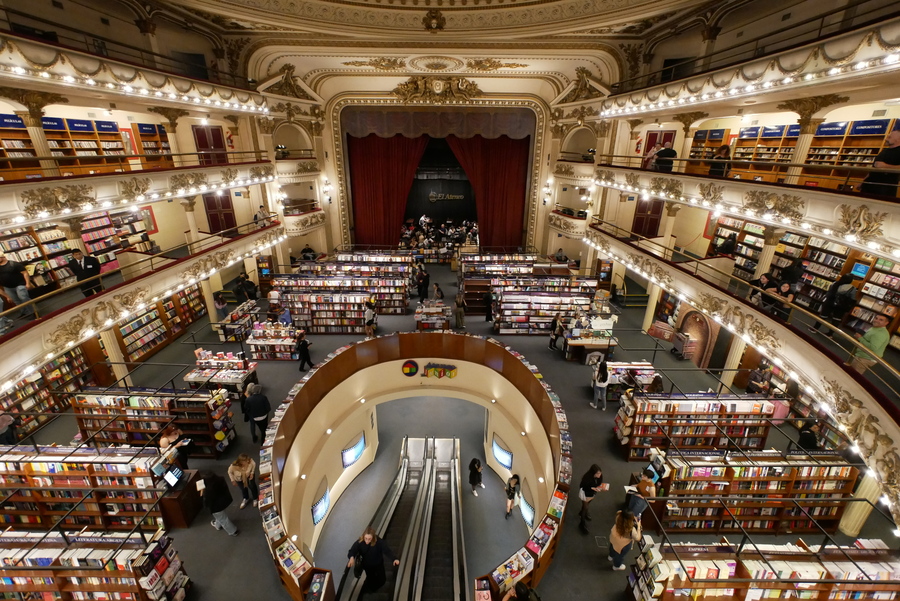
The Ateneo Grand Splendid is consistently regarded as one of the most beautiful bookstores in the world. It’s right up there with Livraria Lello in Porto Portugal.
Take a Stroll around Palermo
The largest neighborhood in Buenos Aires is generally broken up into several smaller sub-neighborhoods. It is really a neighborhood of neighborhoods, each with its own nickname and feel: Palermo Soho, Palermo Hollywood, Palermo Chico, Alto Palermo, Las Cañitas and Villa Freud.
In Palermo, palaces-turned-embassies and ornate 1960s-era apartment buildings mix with hip eateries, fashionable boutiques, and resplendent parks.
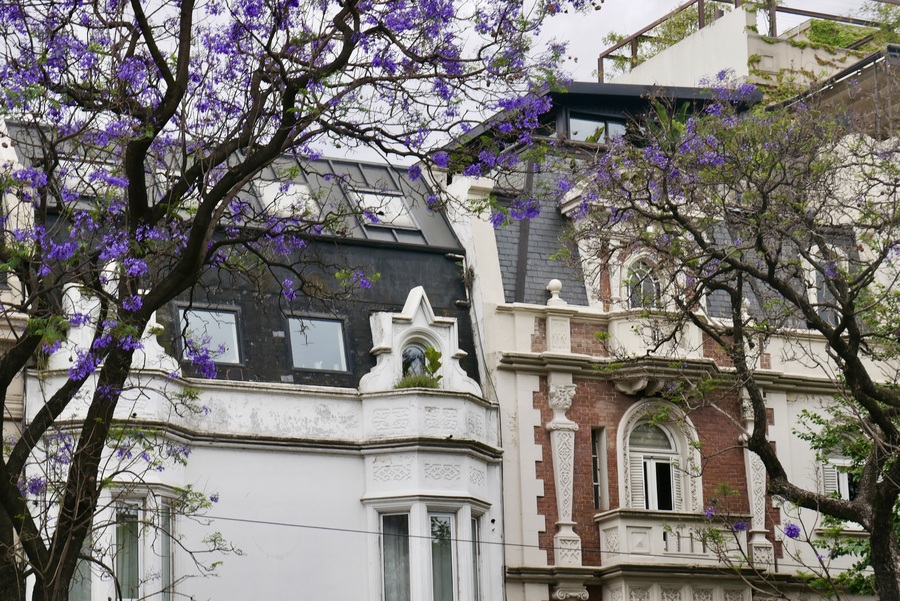
You’ll find a number of large parks interlaced throughout the neighborhood. Collectively, they make for a wonderful urban escape.
-
Parque Tres de Febrero
Parque Tres de Febrero, popularly known as Bosques de Palermo (Palermo Woods), is known for its groves, lakes, and gardens. The green lung of Buenos Aires, Parque Tres de Febrero is the city’s largest park. It contains monuments, statues, an observatory, a garden dedicated to poets, and a rose garden.
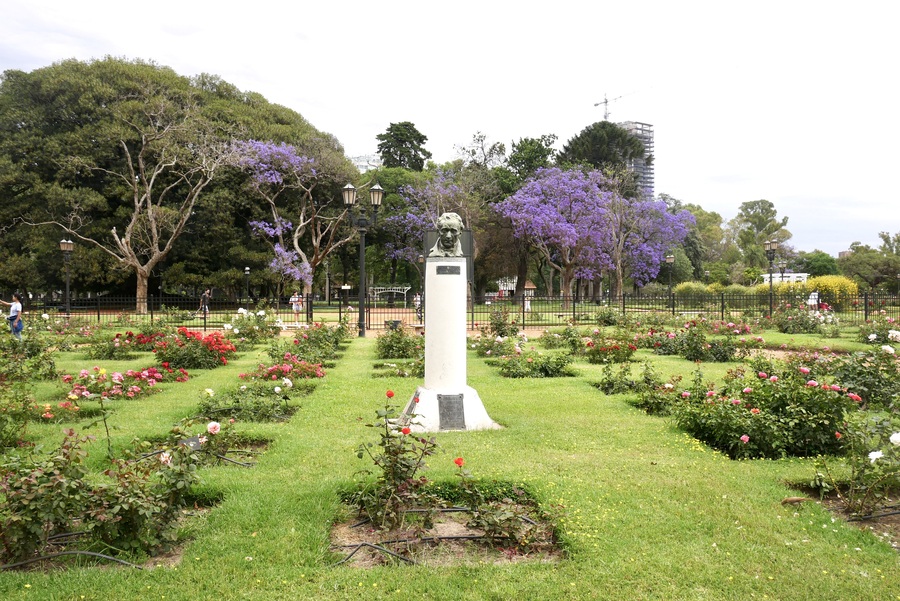
There are plenty of grassy areas and shady trees in the park, with ample space for kids to run around. A path winds around the park’s largest artificial lake. It is a popular spot for cyclists, joggers and rollerbladers.
-
Ecoparque Buenos Aires
The Buenos Aires Eco Park in Palermo is a former zoo that still houses animals in its ponds and among its grasses. Originally opened in 1888, the zoo once contained over 2,500 animals. In 2016, however, the zoo shut down due to allegations of poor animal welfare.
Many of the zoo’s animals have since moved to nature reserves, while some others stayed back in the conservation-centered eco park that reopened a few years later.
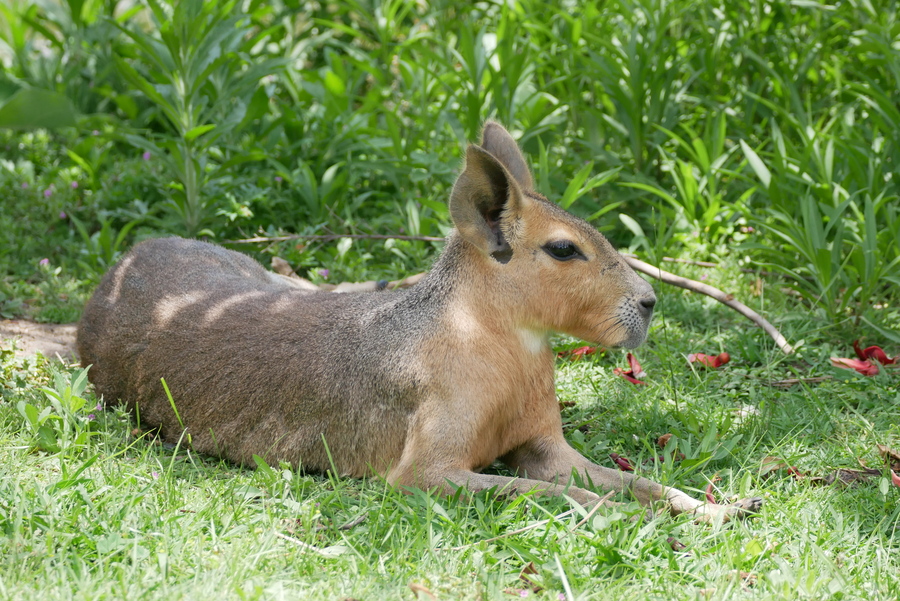
You’ll find plenty of birds and Patagonian mara throughout the park. I imagine it would be a top place to visit in Buenos Aires with kids.
-
Jardin Japones
The Japanese Garden houses bonsai trees, orchids, carp-filled ponds and Japanese sculptures. It is a relaxing retreat adjacent to Parque Tres de Febrero and one of the top places to visit in Palermo.
You can see a bit of the Japanese garden beyond its perimeter fence, but to walk around, you’ll need to shell out a small entrance fee.
Stroll along Puerto Madero
The Puerto Madero Waterfront, situated in the Buenos Aires business district, serves as a showcase for the city’s contemporary architecture. It is the most modern and upscale neighborhood within central Buenos Aires. This once-neglected port of Buenos Aires features gleaming skyscrapers, luxury hotels, and some of the city’s top eateries.
Puente de la Mujer is one of the neighborhood’s most most distinctive features. The prominent Buenos Aires landmark—designed to represent the image of a couple dancing tango—features an angled single mast.
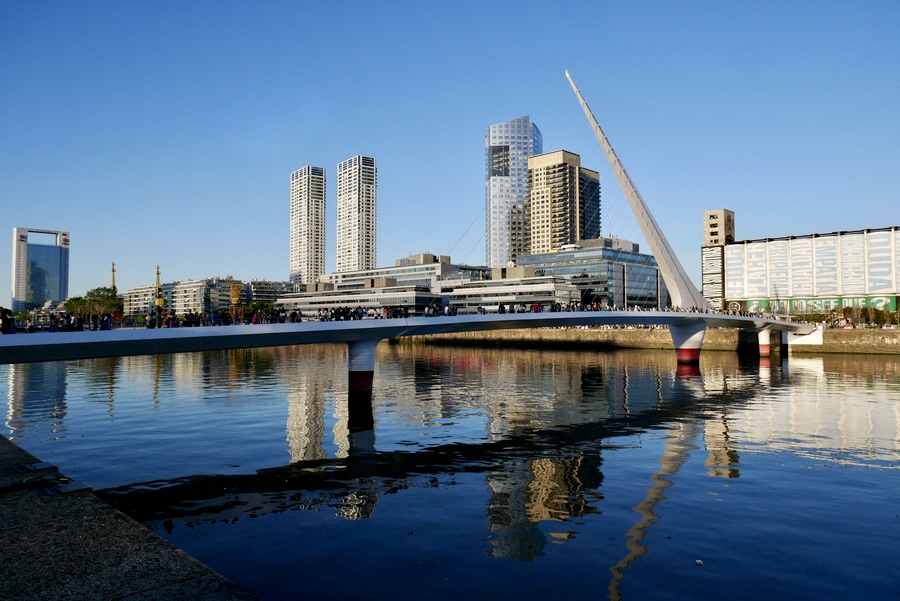
Puerto Madero is worth visiting both during the day and at night, when its illuminated bridges and buildings reflect onto the water.
Cruise through the Tigre Delta
The city of Tigre lies at the northern end of the Buenos Aires metropolitan area. Though technically a separate town, its proximity to downtown makes it a top 3+ day itinerary destination.
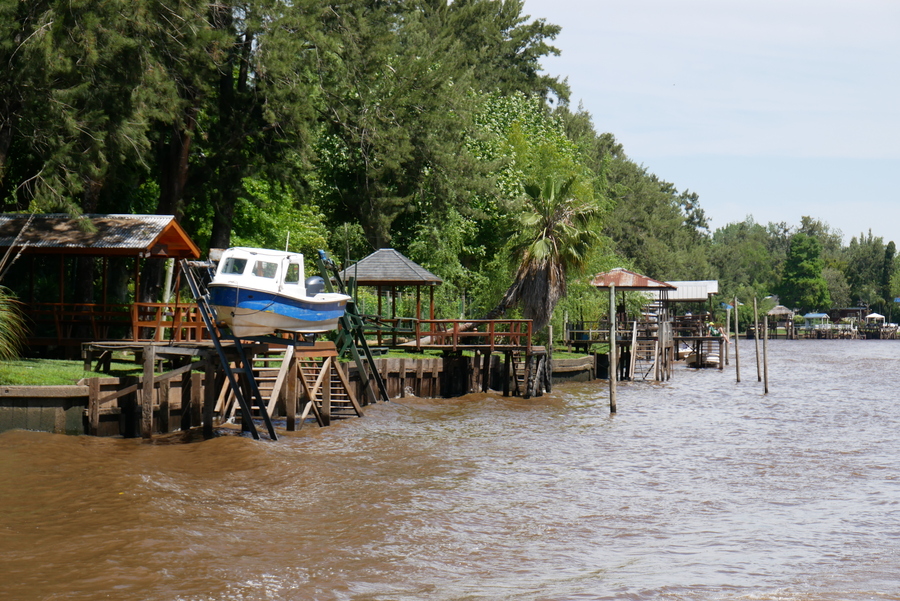
At 5,405 square miles, the Tigre Delta is among the world’s largest. It is also one of the only major deltas in the world that does not empty into a sea or ocean (the Okavango Delta is another that comes to mind). Instead, the Paraná River flows into the Río de la Plata, which separates Argentina and Uruguay.
Tinted by sediment that flows down the Parana River, the latte colored waters of the Tigre Delta spread outward, like branches of a tree. Among the waterways, you can find inhabited islands only reachable by boat.
Entire communities live out on the islands of the Tigre Delta, with schools and shops and restaurants. The forest and grass covered islands are popular retreats among tourists and burnt-out Porteños. You’ll find hotels and guesthouses tucked into the trees.
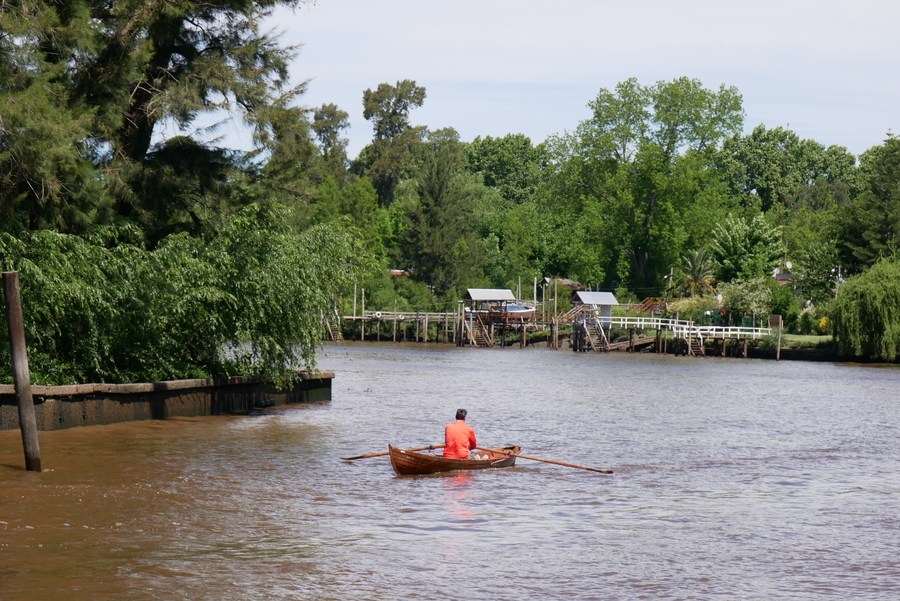
To best explore the delta, you can join an organized boat tour or rely on public ferry boats. We chose to take an hour-long excursion through some of the area’s channels. Taking a boat tour through the area feels a bit like exploring the Xochimilco Canals in Mexico City.
Eat at an Argentine Steakhouse
Argentina is a carnivore’s dream. The city has plenty of steakhouses that are satisfying to the tastebuds and easy on the wallet.
The most famous steakhouse in Argentina is Don Julio—a Michelin-rated restaurant that some consider to be among Latin America’s finest.
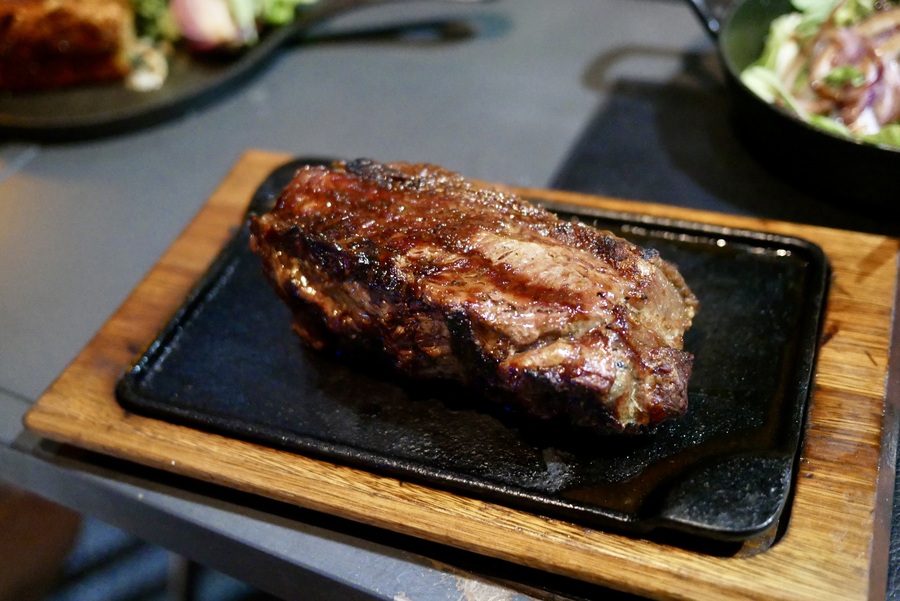
While we didn’t get reservations to Don Julio, Dan and I ate a satisfying steak dinner at Parrilla Peña, a no-frills steakhouse with fabulous reviews and excellent food.
Attend a Tango Show
Buenos Aires is practically synonymous with tango. The dance developed in Buenos Aires’ working class immigrant neighborhoods in the mid-19th century. Forged through a fusion of European, African and native Argentine influences, tango became a worldwide sensation by the 1930s. The dance is revered for its romance, nostalgia, fluid movements, and daringly close embrace.
Today Buenos Aires remains the world capital of tango. The city is awash with professional stage shows, informal street performances, and tango classes.
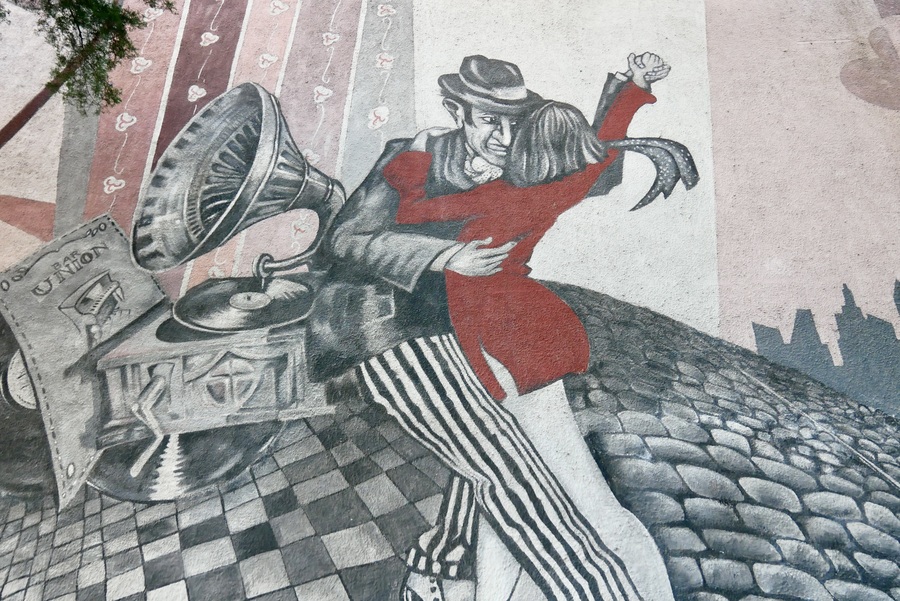
There are a slew of tango shows to choose from in Buenos Aires. Popular ones include the performance at Cafe de los Angelitos and the Rojo Tango performance at the Faena Hotel.
Currency Exchange in Buenos Aires
The blue market in Argentina refers to the country’s black market for foreign currency exchange. It gets its name from the blue strip on newer dollar bills. This market operates outside the legal banking system, often through informal exchange houses.
In Argentina, US Dollars are particularly valuable. You can get a much better exchange rate if you bring crisp 100 dollar bills to Argentina and exchange them on the blue market. Official exchange rates give you less purchasing power.
The existence of the blue market reflects Argentina’s ongoing struggles with inflation and economic instability. Rates change daily. When we visited, the blue market vs official rates were something like 3:1. Now the gap seems to be quite a bit smaller. You can monitor the current rates online, here.
Where to Stay in Buenos Aires
Lodging in Buenos Aires comes in many forms. You’ll find luxurious hotels, cozy guesthouses, and cheap party-oriented youth hostels. During our most recent visit to Buenos Aires, we split our time between the Ibis Styles Florida downtown, the Syrah Suites in Palermo, and the Hilton Buenos Aires in Puerto Madero. Each accommodation provided a totally different experience.
The Ibis Styles is a budget option on a lively pedestrian drag, in the middle of the city’s downtown action. It is great for travelers seeking a private room on a budget.
The Syrah Suites boasts B&B-style rooms in the trendy Palermo neighborhood. The accommodation is clean, conveniently located, and affordable.
The Hilton Buenos Aires attracts travelers seeking the comfort and reliability of a well-established hotel brand. For a luxurious alternative with a bit more Argentine flair, consider the historic Faena Hotel.
When to Visit Buenos Aires
The best time to visit Buenos Aires is in the spring (from September-November) and Fall (from March-June). These seasons have moderate temperatures, fewer crowds, and reasonable hotel prices.
I first visited Buenos Aires in January, on the tail end of a trip to Torres del Paine, El Chalten, and El Calafate. During our stay, the weather was so hot and humid that it hindered our ability to enjoy the city to its fullest potential.
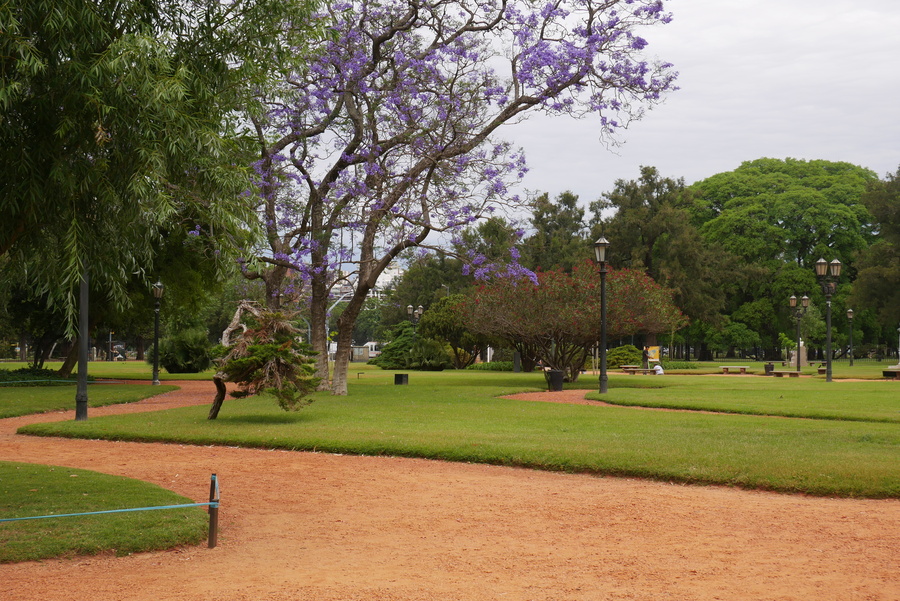
My second trip was in November. The difference was huge. We encountered cloudless skies and moderate sunny temperatures. November also coincided jacaranda blooms that painted the city’s green spaces with splashes of purple.
****
My initial impression of Buenos Aires had largely vanished by the end of my first visit, leaving me with impressions of a city that is both elegant and electrifying.
At the end of my second visit, I became a raving fan.
Buenos Aires is a city with European delicacy and Latin American zeal. A city with wide 20-lane boulevards and quaint, cobblestone alleys. A city with hole-in-the wall panaderias and some of the world’s best steakhouses. From the working-class neighborhoods of San Telmo and La Boca, to the upscale districts of Recoleta and Palermo, the Paris of South America is a melange of culturally distinct communities that, together, form a vibrant, energetic and passionate city.
